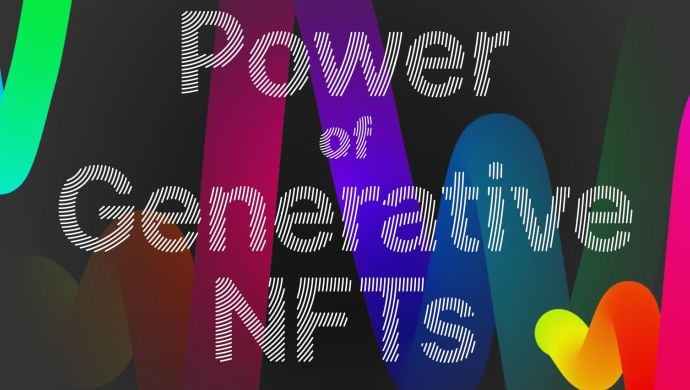
In September 2021, an NFT collection was sold for US$5.38 million in less than an hour. This impressive sale has created a further buzz in the NFT art space, putting generative NFTs on the radar. While NFTs have been around for a while now, many people are still unaware that this particular type exists.
What exactly are generative NFTs? Simply put, it’s an NFT art that’s produced using algorithms to generate new ideas, shapes, forms, colours, or patterns. First, artists create rules that provide distinct rules for the creation process. Then, a computer follows these rules to produce NFTs that are finally secured with blockchain technology.
Compared to traditional artists who may spend days, months, or even years exploring an idea, generative code artists use computer algorithms to create thousands of digital art, all within milliseconds. Generative art pieces introduce randomness as part of the creative process, leading to a roulette game where neither the artist nor the collector knows the final result.
One platform that is pushing this new breed of art is Art Blocks. This NFT platform is rewriting how digital art is captured and shared across global communities.
What is Art Blocks?
Art Block is a one-of-a-kind platform focused on genuinely programmed on-demand generative artwork with contents stored immutably on the Ethereum blockchain. This platform allows artists to pick a style that appeals to them, and the algorithm works to create a randomly generated version of the content sent to an Ethereum wallet. The resulting piece varies and can be a static image, 3D model, or interactive piece. Each output is unique with room for endless possibilities.
Also Read: Demystifying NFTs and DeFi
Comparing Art Blocks to other NFT platforms
Traditional NFT platforms allow users to mint existing artworks and sell them in their marketplace, along with other existing NFTs. On the other hand, Art Blocks is solely focused on generative art, which is created and programmed by the artist.
But Art Blocks isn’t just a platform that showcases and sells generative art; it also hosts the artist’s generative script itself, allowing collectors to interact with the script so they can receive a unique output. The output is the artwork itself containing fully randomised variables that are distinct from other outputs produced by the same script.
In addition, collectors can mint NFTs from Art Blocks using an artist’s programme, thus providing new and unique outputs based on the artist’s chosen variables like colour, geometry and rarity features. So you don’t just buy an existing NFT, you can make one that’s uniquely yours.
A platform for innovative artists
Who are the artists on Art Blocks? Despite having vastly different styles, they all have one thing in common: unmatched creativity to express their work through generative NFTs. Here are examples:
Owen Moore -This generative artist released a collection focused on the current situation during the initial outbreak of the coronavirus pandemic called Quarantine. This collection has currently minted 128 NFTs, with its most high-valued piece currently valued at US$1,093.
Bard Ionson – He used symbols of sexuality, gender and luck in his generative NFT. He is also the NFT artist inspired by Nam June Paik’s “Internet Dweller”. His collection of Color Magic Planets and eight generative codes has minted 80 NFTs, with one piece sold at US$1,873.
Tyler Hobbs – He is one of the most successful artists on Art Blocks. He created the Fidenza collection that has 999 pieces, with each piece unique from one another. His collection has earned him more than US$177 million in sales, including a purchase by Snoop Dogg.
How do you determine the value of generative NFTs?
The value of generative NFT art is based on many factors, such as its embedded attributes, the degrees of programmatic rarity, and how these elements come together in a visually pleasing way to the collector. While the programmatic characteristics add quantifiable metrics that can transmute ideas into NFT, almost all generative art pieces are valued from subjectivity.
Also Read: ‘NFTs provide new ways to handle IP management, empower content creators’: Inmagine CEO Warren Leow
No matter which art piece it is, each one can be verified in terms of its original artwork thanks to its underlying blockchain technology. One of the core values of NFTs stems from the ability to trace the real (or pseudonymous) owner, preserving the history of how value is created and transferred over time.
Unleashing new dimensions of digital creativity
The increased adoption and minting of generative NFTs point to further adoption among the artist community. In the future, other new forms of NFTs, in addition to generative art, may well continue to be introduced. With no limit to creativity, anyone can leverage NFTs as a way to make their ideas come alive. Better yet, it can be shared more freely across the digital realm, challenging the past limitations of the art world.
—
The content was first published by The Human & Machine.
Image Credit: The Human & Machine
The post How generative NFTs are extending the boundaries of digital art appeared first on e27.

